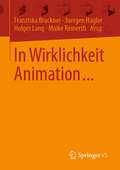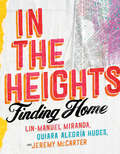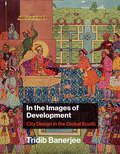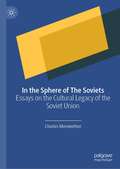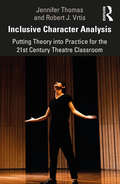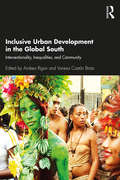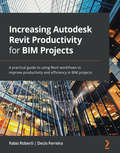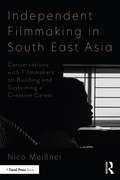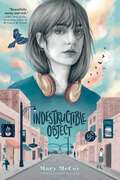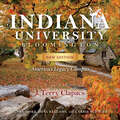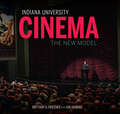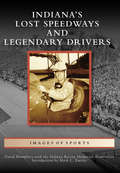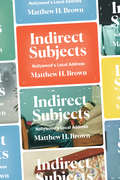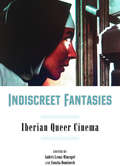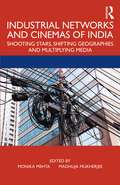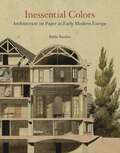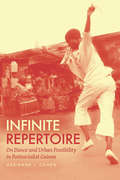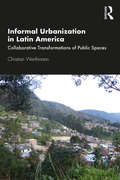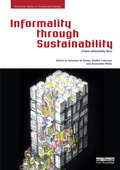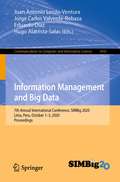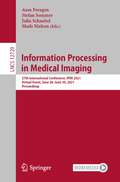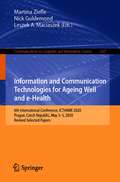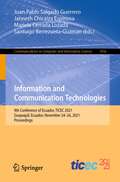- Table View
- List View
In Wirklichkeit Animation...: Beiträge zur deutschsprachigen Animationsforschung
by Franziska Bruckner Maike Sarah Reinerth Holger Lang Juergen HaglerDieser Band stellt das Spannungsfeld von Wirklichkeit und Animation in den Mittelpunkt und lotet aus, inwieweit dieses Verhältnis interdisziplinär begriffen und (medien)theoretisch erfasst werden kann. Wirklichkeit und Animation erscheinen im ersten Moment als Gegensatz: auf der einen Seite das Reale, Nicht-Mediale, Tatsächliche und Ursprüngliche und auf der anderen Seite das Fiktive, In-Bewegung-Gesetzte, Verwandelte und künstlich Gemachte. Doch gerade aus diesem vermeintlichen Kontrast ergibt sich ein produktives Spannungsfeld: So setzen auch ‚realistische‘ und dokumentarische Formen vielfach Animationen ein. Realfotografische und animierte Elemente verbinden sich in Online-Umgebungen und Augmented-Reality-Formaten zu Hybriden. Hinsichtlich virtueller Wirklichkeiten stellt sich außerdem die Frage, wie hyperrealistische Animationen und Effekte in der Postproduktion zu bewerten sind und ob die ausgestellte Künstlichkeit sichtbarer Animation nicht authentischer wirkt. Parallel dazu entwickeln sich die Animation Studies zu einem wachsenden interdisziplinären Forschungsfeld, dessen Stellenwert sich nicht nur im künstlerischen und medien-wissenschaftlichen Bereich, sondern auch in der industriellen Anwendung zeigt.
In the Heights: Finding Home
by Quiara Alegría Hudes Lin-Manuel Miranda Jeremy McCarterThe eagerly awaited follow-up to the #1 New York Times bestseller Hamilton: The Revolution, Lin-Manuel Miranda’s new book gives readers an extraordinary inside look at In the Heights, his breakout Broadway debut, written with Quiara Alegría Hudes, now a Hollywood blockbuster. <P><P>In 2008, In the Heights, a new musical from up-and-coming young artists, electrified Broadway. The show’s vibrant mix of Latin music and hip-hop captured life in Washington Heights, the Latino neighborhood in upper Manhattan. It won four Tony Awards and became an international hit, delighting audiences around the world. For the film version, director Jon M. Chu (Crazy Rich Asians) brought the story home, filming its spectacular dance numbers on location in Washington Heights. <P><P>That’s where Usnavi, Nina, and their neighbors chase their dreams and ask a universal question: Where do I belong? In the Heights: Finding Home reunites Miranda with Jeremy McCarter, co-author of Hamilton: The Revolution, and Quiara Alegría Hudes, the Pulitzer Prize–winning librettist of the Broadway musical and screenwriter of the film. <P><P>They do more than trace the making of an unlikely Broadway smash and a major motion picture: They give readers an intimate look at the decades-long creative life of In the Heights. Like Hamilton: The Revolution, the book offers untold stories, perceptive essays, and the lyrics to Miranda’s songs—complete with his funny, heartfelt annotations. It also features newly commissioned portraits and never-before-seen photos from backstage, the movie set, and productions around the world. This is the story of characters who search for a home—and the artists who created one. <P><P><b>A New York Times Best Seller</b>
In the Images of Development: City Design in the Global South (Urban and Industrial Environments)
by Tridib BanerjeeThe urban legacy of the Global South since the colonial era and how sustainable development and environmental and social justice can be achieved. Remarkably little of the expansive literature on development and globalization considers actual urban form and the physical design of cities as outcomes of these phenomena. The development that has shaped historic transformations in urban form and urbanism—and the consequent human experiences—remains largely unexplored. In this book, Tridib Banerjee fills this void by linking the idea of development with those of urbanism, urban form, and urban design, focusing primarily on the contemporary cities in the developing world—the Global South—and their intrinsic prospects in city design. Further, he examines the endogenous possibilities for the future design of these cities that may address growing inequality and the environmental crisis. Banerjee deftly traces the urban legacy of the Global South from the beginning of the colonial era, closely examining the economic, political, and ideological forces that influenced colonial and postcolonial development, drawing from relevant experiences of different cities in the developing world and discussing the arguments for the historic parity of these cities with their Western counterparts. Finally, Banerjee considers essential notions of future city design that are grounded in the critical challenges of sustainable development, equity, environmental and social justice, and diversity, and how such outcomes can be achieved. This book serves as the opening of a long overdue conversation among design, development, and planning scholars and practitioners, and those interested in the urban development of the Global South.
In the Sphere of The Soviets: Essays on the Cultural Legacy of the Soviet Union
by Charles MerewetherThe book distinctive is listed in points (i) it focuses on Eastern European art covering the historical avant-garde to the post-war and contemporary periods of; (ii) it looks at some key artists in the countries that have not been given so much attention within this content i.e. Georgia, Dagestan, Chechnya and Central Asia; (iii) it looks beyond Eastern Europe to the influence of Russia/Soviet Union in Asia. It explores the theoretical models developed for understanding contemporary art across Eastern Europe and focus on the new generation of Georgian artists who emerged in the immediate years before and after the country’s independence from the Soviet Union; and on to discuss the legacy and debates around monuments across Poland, Russia and Ukraine.helps in Better understanding the postwar and contemporary art in Eastern Europe.
Inclusive Character Analysis: Putting Theory into Practice for the 21st Century Theatre Classroom
by Jennifer Thomas Robert J. VrtisInclusive Character Analysis foregrounds representations of race, gender, class, ability, and sexual orientation by blending script analysis with a variety of critical theories in order to create a more inclusive performance practice for the classroom and the stage. This book merges a traditional Stanislavski-based script analysis with multiple theoretical frameworks, such as gender theory, standpoint theory, and critical race theory, to give students in early level theatre courses foundational skills for analyzing a play, while also introducing them to contemporary thought about race, gender, and identity. Inclusive Character Analysis is a valuable resource for beginning acting courses, script analysis courses, the directing classroom, early design curriculum, dramaturgical explorations, the playwriting classroom, and introduction to performance studies classes. Additionally, the book offers a reader-style background on theoretical frames for performance faculty and practitioners who may need assistance to integrate non-performance centered theory into their classrooms.
Inclusive Urban Development in the Global South: Intersectionality, Inequalities, and Community
by Andrea RigonInclusive Urban Development in the Global South emphasizes the importance of the neighbourhood in urban development planning, with case studies aimed at transforming current intervention practices towards more inclusive and just means of engagement with individuals and communities. The chapters explore how diversity of gender, class, race and ethnicity, citizenship status, age, ability, and sexuality is taken (or not taken) into account and approached in the planning and implementation of development policy and interventions in poor urban areas. The book employs a practical perspective on the deployment of theoretical critiques of intersectionality and diversity in development practice through case studies examining issues such as water and sanitation planning in Dhaka, indigenous rights to the city in Bolivia, post-colonial planning in Hong Kong, land reform in Zimbabwe, and many more. The book focuses on radical alternatives with the potential to foster urban transformations for planning and development communities working around the world.
Increasing Autodesk Revit Productivity for BIM Projects: A practical guide to using Revit workflows to improve productivity and efficiency in BIM projects
by Fabio Roberti Decio FerreiraDiscover how to implement Revit best practices along with Dynamo and Power BI to visualize and analyze BIM informationKey FeaturesBoost productivity in Revit and apply multiple workflows to work efficiently on BIM projectsOptimize your daily work in Revit to perform more tasks in less timeTake a hands-on approach to improving your efficiency with useful explanations, which will step-change your productivityBook DescriptionRevit software helps architects, BIM coordinators, and BIM managers to create BIM models and analyze data to improve design and construction. Building Information Modeling (BIM) has promoted a transformation in the engineering and construction industries where information is at the core of a methodology that improves productivity, providing several benefits in comparison to the traditional 2D CAD process. This book takes a hands-on approach to implementing this new methodology effectively. Complete with step-by-step explanations of essential concepts and practical examples, this Revit book begins by explaining the principles of productivity in Revit and data management for BIM projects. You'll get to grips with the primary BIM documentation to start a BIM project, including the contract, Exchange Information Requirements (EIR), and BIM Execution Plan (BEP/BXP). Later, you'll create a Revit template, start a Revit project, and explore the core functionalities of Revit to increase productivity. Once you've built the foundation, you'll learn about Revit plugins and use Dynamo for visual programming and Power BI for analyzing BIM information. By the end of this book, you'll have a solid understanding of Revit as construction and design software, how to increase productivity in Revit, and how to apply multiple workflows in your project to manage BIM.What you will learnExplore the primary BIM documentation to start a BIM projectSet up a Revit project and apply the correct coordinate system to ensure long-term productivityImprove the efficiency of Revit core functionalities that apply to daily activitiesUse visual programming with Dynamo to boost productivity and manage data in BIM projectsImport data from Revit to Power BI and create project dashboards to analyze dataDiscover the different Revit plugins for improved productivity, visualization, and analysisImplement best practices for modeling in RevitWho this book is forThis book is for architects, designers, engineers, modelers, BIM coordinators, and BIM managers interested in learning Autodesk Revit best practices. Increasing Autodesk Revit Productivity for BIM Projects will help you to explore the methodology that combines information management and research for quality inputs when working in Revit.
Independent Filmmaking in South East Asia: Conversations with Filmmakers on Building and Sustaining a Creative Career
by Nico MeissnerFeaturing interviews with 27 award-winning and emerging filmmakers, this book is the first comprehensive look at independent filmmaking careers in South East Asia with never-before published insights into the lives and careers of some of the most influential filmmakers in one of the world’s most exciting screen production regions.Celebrating filmmaking in South East Asia, the interviews offer unique perspectives that highlight the various paths filmmakers have taken to establish and develop their independent filmmaking careers. Presenting filmmakers whose films span narrative, documentary and experimental genres, and from all ten South East Asian nations, the filmmakers in this collection include: Camera d’Or winner Anthony Chen Sundance Grand Jury Prize nominee Mouly Surya NETPAC Award Winner Sheron Dayoc Brunei’s first female director, Siti Kamaluddin Directors of the Wathann Festival, Thaiddhi and Thu Thu Shein Lao’s only female and first horror film director, Mattie Do Aimed at aspiring filmmakers with a focus on career building outside of global production hubs, Meißner has curated a collection of interviews that reflects the diversity and ambition of filmmaking in South East Asia. The book is accompanied by a companion website (www.southeastasianfilmcareers.com) that includes 27 micro-documentaries on the included filmmakers.
Indestructible Object
by Mary McCoy&“Beautifully messy and real.&” —Amy Spalding, bestselling author of We Used to Be Friends Perfect for fans of What If It&’s Us and Mary H. K. Choi, this stunning coming-of-age novel from Printz Honor author Mary McCoy follows a Memphis teen whose quest to uncover the secrets of love reveals new truths about herself.For the past two years, Lee has been laser-focused on two things: her job as a sound tech at a local coffee shop and her podcast Artists in Love, which she cohosts with her boyfriend Vincent. Until he breaks up with her on the air right after graduation. When their unexpected split, the loss of her job, and her parent&’s announcement that they&’re separating coincide, Lee&’s plans, her art, and her life are thrown into turmoil. Searching for a new purpose, Lee recruits her old friend Max and new friend Risa to produce a podcast called Objects of Destruction, where they investigate whether love actually exists at all. But the deeper they get into the love stories around them, the more Lee realizes that she&’s the one who&’s been holding love at arm&’s length. And when she starts to fall for Risa, she finds she&’ll have to be more honest with herself and the people in her life to create a new love story of her own. Funny, romantic, and heartfelt, this is a story about secrets, lies, friendship, found family, an expired passport, a hidden VHS tape, fried pickles, the weird and wild city of Memphis, and, most of all, love.
Indiana University Bloomington: America's Legacy Campus (Well House Books)
by J. Terry Clapacs Susan Moke Dina Kellams Carrie SchwierAmid the forested hills of southern Indiana stands one of America's most beautiful college campuses. Indiana University Bloomington: America's Legacy Campus, the new edition, returns the reader to this architectural gem and cultural touchstone. Revised and updated to include new buildings and features of campus life, it is a must have for any Hoosier. The IU Bloomington campus, rich in architectural tradition, harmonious in building scale and materials, and surrounded by natural beauty, stands today as a testimony to careful campus planning and committed stewardship. Planning principles adopted in the very early stages of campus development have been protected, enhanced, and faithfully preserved, resulting in an institution that can truly be called America's Legacy Campus. Lavishly illustrated and brimming with fascinating details, this book tells the story of Indiana University—a tale not only of buildings, architecture, and growth, but of the talented, dedicated people who brought the buildings to life. Completely updated with new buildings and an epilogue, and now even more lavishly illustrated, this new edition is a lasting tribute to the treasure that is Indiana University Bloomington.
Indiana University Cinema: The New Model (Well House Books)
by Brittany D. Friesner Jon VickersIn its first ten years, a small Midwestern cinema has attracted some of the most intriguing and groundbreaking filmmakers from around the world, screened the best in arthouse and repertory films, and presented innovative and unique cinematic experiences.Indiana University Cinema tells the story of how the cinema on the campus of Indiana University Bloomington grew into a vibrant, diverse, and thoughtfully curated cinematheque. Detailing its creation of a transformative cinematic experience throughout its inaugural decade, the IU Cinema has arguably become one of the best venues for watching movies in the country. Featuring 17 exclusive interviews with filmmakers and actors, as well as an afterword from Jonathan Banks (Breaking Bad and Better Call Saul), Indiana University Cinema, is a lavishly illustrated book that is sure to please everyone from the casual moviegoer to the most passionate cinephile.
Indiana's Lost Speedways and Legendary Drivers (Images of Sports)
by David HumphreyFrom the Indianapolis 500 Motor Speedway to the dirt oval tracks in small Indiana towns, thousands of Hoosiers frequent the raceway of their choice each year. Today, there are an estimated 40 asphalt, clay, and dirt-covered oval tracks in Indiana where race fans cheer local drivers, often navigating jalopies pieced together from junkyard parts, to victory lane. Though many racetracks remain in operation throughout the state, dozens have fallen to the wayside over the past 100 years. Forever in remembrance are the famous and not so famous Indiana-born drivers who thrilled fans at those now defunct tracks. Evansville native Charlie Wiggins won the Gold and Glory Sweepstakes four times. Bob Kinser from Bloomington raced over 40 years and is an inductee of the National Sprint Car Hall of Fame, and Tom Cherry of Muncie won the Little 500 four times.
Indirect Subjects: Nollywood's Local Address
by Matthew H. BrownIn Indirect Subjects, Matthew H. Brown analyzes the content of the prolific Nigerian film industry's mostly direct-to-video movies alongside local practices of production and circulation to show how screen media play spatial roles in global power relations. Scrutinizing the deep structural and aesthetic relationship between Nollywood, as the industry is known, and Nigerian state television, Brown tracks how several Nollywood films, in ways similar to both state television programs and colonial cinema productions, invite local spectators to experience liberal capitalism not only as a form of exploitation but as a set of expectations about the future. This mode of address, which Brown refers to as “periliberalism,” sustains global power imbalances by locating viewers within liberalism but distancing them from its processes and benefits. Locating the wellspring of this hypocrisy in the British Empire's practice of indirect rule, Brown contends that culture industries like Nollywood can sustain capitalism by isolating ordinary African people, whose labor and consumption fuel it, from its exclusive privileges.
Indiscreet Fantasies: Iberian Queer Cinema (Campos Ibéricos: Bucknell Studies in Iberian Literatures and Cultures)
by Kelly Moore Joan Ramon Resina Ann Davies Jennifer Brady William Viestenz Nina L Molinaro Ana Corbalán Meredith Lyn Jeffers Darío Sánchez González Ibon Izurieta María Teresa Vera-Rojas Rui Trindade OliveiraPedro Almódovar may have helped put queer Iberian cinema on the map, but there are also multitudes of other LGBTQ filmmakers from Catalonia, Portugal, Castile, Galicia, and the Basque Country who have made the Peninsula one of the world’s most vital sources for queer film. Together, they have produced a cinema whose expressions of queer desire have challenged the region’s conservative religious and family values, while intervening in vital debates about politics, history, and nation. <P><P> Iberian Queer Cinema is a unique collection that offers in-depth analyses of fifteen different films, each by a different director, produced in the region over the past fifty years, from Narciso Ibáñez Serrador’s La residencia (The House That Screamed, 1970) to João Pedro Rodrigues’ O ornitólogo (The Ornithologist, 2016). Together, they show how queer Iberian cinema has responded to historical traumas ranging from the AIDS crisis to the repressive and homophobic Franco regime. Yet they also explore how these films gesture towards a more fluid understanding of sexuality, gender, and national identity. This book will thus give readers a new appreciation for both the cultural diversity of Iberia and the richness of its moving and thought-provoking queer cinema. <P><P> Published by Bucknell University Press. Distributed worldwide by Rutgers University Press.
Industrial Networks and Cinemas of India: Shooting Stars, Shifting Geographies and Multiplying Media
by Monika Mehta Madhuja MukherjeeThis volume points to the limits of models such as regional, national, and transnational, and develops ‘network’ as a conceptual category to study cinemas of India. Through grounded and interdisciplinary research, it shows how film industries located in disparate territories have not functioned as isolated units and draws attention to the industrial traffic – of filmic material, actors, performers, authors, technicians, genres, styles, sounds, expertise, languages, and capital, across trans-regional contexts -- since the inception of cinema. It excavates histories of film production, distribution and exhibition, and their connections beyond regional and national boundaries, and between places, industrial practices, and multiple media. The chapters in this volume address a range of themes such as transgressive female figures; networks of authors and technicians; trans-regional production links and changing technologies, and new media geographies. By tracking manifold changes in the contexts of transforming media, and inter-connections between diverse industrial nodal points, this book expands the critical vocabulary in media and production studies and foregrounds new methods for examining cinema. A generative account of industrial networks, this volume will be useful for scholars and researchers of film studies, cinema studies, media studies, production studies, media sociology, gender studies, South Asian studies, and cultural studies.
Inessential Colors: Architecture on Paper in Early Modern Europe
by Basile BaudezThe first comprehensive account of how and why architects learned to communicate through colorArchitectural drawings of the Italian Renaissance were largely devoid of color, but from the seventeenth century through the nineteenth, polychromy in architectural representation grew and flourished. Basile Baudez argues that colors appeared on paper when architects adapted the pictorial tools of imitation, cartographers' natural signs, military engineers' conventions, and, finally, painters' affective goals in an attempt to communicate with a broad public.Inessential Colors traces the use of color in European architectural drawings and prints, revealing how this phenomenon reflected the professional anxieties of an emerging professional practice that was simultaneously art and science. Traversing national borders, the book addresses color as a key player in the long history of rivalry and exchange between European traditions in architectural representation and practice.Featuring a wealth of previously unpublished drawings, Inessential Colors challenges the long-standing misreading of architectural drawings as illustrations rather than representations, pointing instead to their inherent qualities as independent objects whose beauty paved the way for the visual system architects use today.
Infinite Repertoire: On Dance and Urban Possibility in Postsocialist Guinea
by Adrienne J. CohenIn Guinea’s capital city of Conakry, dance is everywhere. Most neighborhoods boast at least one dance troupe, and members of those troupes animate the city’s major rites of passage and social events. In Infinite Repertoire, Adrienne Cohen shows how dance became such a prominent—even infrastructural—feature of city life in Guinea, and tells a surprising story of the rise of creative practice under a political regime known for its authoritarianism and violent excesses. Guinea’s socialist state, which was in power from 1958 to 1984, used staged African dance or “ballet” strategically as a political tool, in part by tapping into indigenous conceptualizations of artisans as powerful figures capable of transforming the social fabric through their manipulation of vital energy. Far from dying with the socialist revolution, Guinean ballet continued to thrive in Conakry after economic liberalization in the 1980s, with its connection to transformative power retrofitted for a market economy and a rapidly expanding city. Infinite Repertoire follows young dancers and percussionists in Conakry as they invest in the present—using their bodies to build a creative urban environment and to perform and redefine social norms and political subjectivities passed down from the socialist generation before them. Cohen’s inventive ethnography weaves the political with the aesthetic, placing dance at the center of a story about dramatic political change and youthful resourcefulness in one of the least-studied cities on the African continent.
Infinite Repertoire: On Dance and Urban Possibility in Postsocialist Guinea
by Adrienne J. CohenIn Guinea’s capital city of Conakry, dance is everywhere. Most neighborhoods boast at least one dance troupe, and members of those troupes animate the city’s major rites of passage and social events. In Infinite Repertoire, Adrienne Cohen shows how dance became such a prominent—even infrastructural—feature of city life in Guinea, and tells a surprising story of the rise of creative practice under a political regime known for its authoritarianism and violent excesses. Guinea’s socialist state, which was in power from 1958 to 1984, used staged African dance or “ballet” strategically as a political tool, in part by tapping into indigenous conceptualizations of artisans as powerful figures capable of transforming the social fabric through their manipulation of vital energy. Far from dying with the socialist revolution, Guinean ballet continued to thrive in Conakry after economic liberalization in the 1980s, with its connection to transformative power retrofitted for a market economy and a rapidly expanding city. Infinite Repertoire follows young dancers and percussionists in Conakry as they invest in the present—using their bodies to build a creative urban environment and to perform and redefine social norms and political subjectivities passed down from the socialist generation before them. Cohen’s inventive ethnography weaves the political with the aesthetic, placing dance at the center of a story about dramatic political change and youthful resourcefulness in one of the least-studied cities on the African continent.
Infinite Repertoire: On Dance and Urban Possibility in Postsocialist Guinea
by Adrienne J. CohenIn Guinea’s capital city of Conakry, dance is everywhere. Most neighborhoods boast at least one dance troupe, and members of those troupes animate the city’s major rites of passage and social events. In Infinite Repertoire, Adrienne Cohen shows how dance became such a prominent—even infrastructural—feature of city life in Guinea, and tells a surprising story of the rise of creative practice under a political regime known for its authoritarianism and violent excesses. Guinea’s socialist state, which was in power from 1958 to 1984, used staged African dance or “ballet” strategically as a political tool, in part by tapping into indigenous conceptualizations of artisans as powerful figures capable of transforming the social fabric through their manipulation of vital energy. Far from dying with the socialist revolution, Guinean ballet continued to thrive in Conakry after economic liberalization in the 1980s, with its connection to transformative power retrofitted for a market economy and a rapidly expanding city. Infinite Repertoire follows young dancers and percussionists in Conakry as they invest in the present—using their bodies to build a creative urban environment and to perform and redefine social norms and political subjectivities passed down from the socialist generation before them. Cohen’s inventive ethnography weaves the political with the aesthetic, placing dance at the center of a story about dramatic political change and youthful resourcefulness in one of the least-studied cities on the African continent.
Informal Urbanization in Latin America: Collaborative Transformations of Public Spaces
by Christian WerthmannVarious kinds of informal and extra-legal settlements—commonly called shantytowns, favelas, or barrios—are the prevailing type of urban land use in much of the developing world. United Nations estimates suggest that there are close to 900 million people living in squatter communities worldwide, with the number expected to increase in the coming decades. Informal Urbanization in Latin America investigates prevailing strategies for addressing informal settlements, which started to shift away from large-scale slum clearance to on-site upgrading in Latin America over the last 40 years, by improving public spaces, infrastructure and facilities. The cases in this book range from one micro intervention (the Villa Tranquila Project in Buenos Aires) to three large-scale government-run projects: the celebrated Favela Bairro Program in Rio de Janeiro, the social housing program in São Paulo and the famous Proyectos Urbanos Integrales Approach in Medellín. The cases show a collaborative and sensitive transformation of landscape and public space, and provide designers and planners with the tools to develop better strategies that can mitigate the volatility that the residents of non-formal neighborhoods are exposed to. The book is a must-read for all who are interested or working in the global urbanization as well as social equity.
Informality through Sustainability: Urban Informality Now (Earthscan Series On Sustainable Design Ser.)
by Steffen Lehmann Alessandro Melis Antonino Di RaimoInformality through Sustainability explores the phenomenon of informality within urban settlements and aims to unravel the subtle links between informal settlements and sustainability. Penetrating its global profile and considering urban informality through an understanding of local implications, the authors collectively reveal specific correlations between sites and their local inhabitants. The book opposes simplistic calls to legalise informal settlements or to view them as ‘problems’ to be solved. It comes at a time when common notions of ‘informality’ are being increasingly challenged. In 25 chapters, the book presents contributions from well-known scholars and practitioners whose theoretical or practical work addresses informality and sustainability at various levels, from city planning and urban design to public space and architectural education. Whilst previous studies on informal settlements have mainly focused on cases in developing countries, approaching the topic through social, cultural and material dimensions, the book explores the concept across a range of contexts, including former Communist countries and those in the so-called Global North. Contributions also explore understandings of informality at various scalar levels – region, precinct, neighbourhood and individual building. Thus, this work helps reposition informality as a relational concept at various scales of urbanisation. This book will be of great benefit to planners, architects, researchers and policymakers interested in the interplay between informality and sustainability.
Information Management and Big Data: 7th Annual International Conference, SIMBig 2020, Lima, Peru, October 1–3, 2020, Proceedings (Communications in Computer and Information Science #1410)
by Juan Antonio Lossio-Ventura Hugo Alatrista-Salas Jorge Carlos Valverde-Rebaza Eduardo DíazThis book constitutes the refereed proceedings of the 7th International Conference on Information Management and Big Data, SIMBig 2020, held in Lima, Peru, in October 2020.*The 32 revised full papers and 7 revised short papers presented were carefully reviewed and selected from 122 submissions. The papers address topics such as natural language processing and text mining; machine learning; image processing; social networks; data-driven software engineering; graph mining; and Semantic Web, repositories, and visualization. *The conference was held virtually.
Information Processing in Medical Imaging: 27th International Conference, IPMI 2021, Virtual Event, June 28–June 30, 2021, Proceedings (Lecture Notes in Computer Science #12729)
by Aasa Feragen Mads Nielsen Stefan Sommer Julia SchnabelThis book constitutes the proceedings of the 27th International Conference on Information Processing in Medical Imaging, IPMI 2021, which was held online during June 28-30, 2021. The conference was originally planned to take place in Bornholm, Denmark, but changed to a virtual format due to the COVID-19 pandemic.The 59 full papers presented in this volume were carefully reviewed and selected from 200 submissions. They were organized in topical sections as follows: registration; causal models and interpretability; generative modelling; shape; brain connectivity; representation learning; segmentation; sequential modelling; learning with few or low quality labels; uncertainty quantification and generative modelling; and deep learning.
Information and Communication Technologies for Ageing Well and e-Health: 6th International Conference, ICT4AWE 2020, Prague, Czech Republic, May 3–5, 2020, Revised Selected Papers (Communications in Computer and Information Science #1387)
by Leszek A. Maciaszek Martina Ziefle Nick GuldemondThis book constitutes the revised, selected and extended papers of the 6th International Conference on Communication Technologies for Ageing Well and e-Health, ICT4AWE 2020, held in Prague, Czech Republic, in May 2020. Due to the COVID-19 pandemic the conference was held online. The 7 full papers presented were carefully reviewed and selected from 50 submissions. The papers present most recent research on best practices, innovation and technical improvements in the fields of age and health care, education, psychology, social coordination and ambient assisted living.
Information and Communication Technologies: 9th Conference of Ecuador, TICEC 2021, Guayaquil, Ecuador, November 24–26, 2021, Proceedings (Communications in Computer and Information Science #1456)
by Juan Pablo Salgado Guerrero Janneth Chicaiza Espinosa Mariela Cerrada Lozada Santiago Berrezueta-GuzmanThis book constitutes refereed proceedings of the 9th Conference on Information and Communication Technologies of Ecuador, TICEC 2021, held at the Universidad Politécnica Salesiana (UPS) campus in November 2021. The conference was organized in hybrid mode.The 24 full papers were carefully reviewed and selected from 126 qualified submissions. The papers cover a great variety of topics, such as data mining, neural networks, cyberphysical systems, telemedicine, traffic simulation, geospatial information, human–machine interaction, cloud computing, and others. The contributions are divided into the following thematic blocks: Data Science, ICT´s Applications, Industry 4.0, Technology and Environment, Biomedical Sensors and Wearables Systems.
